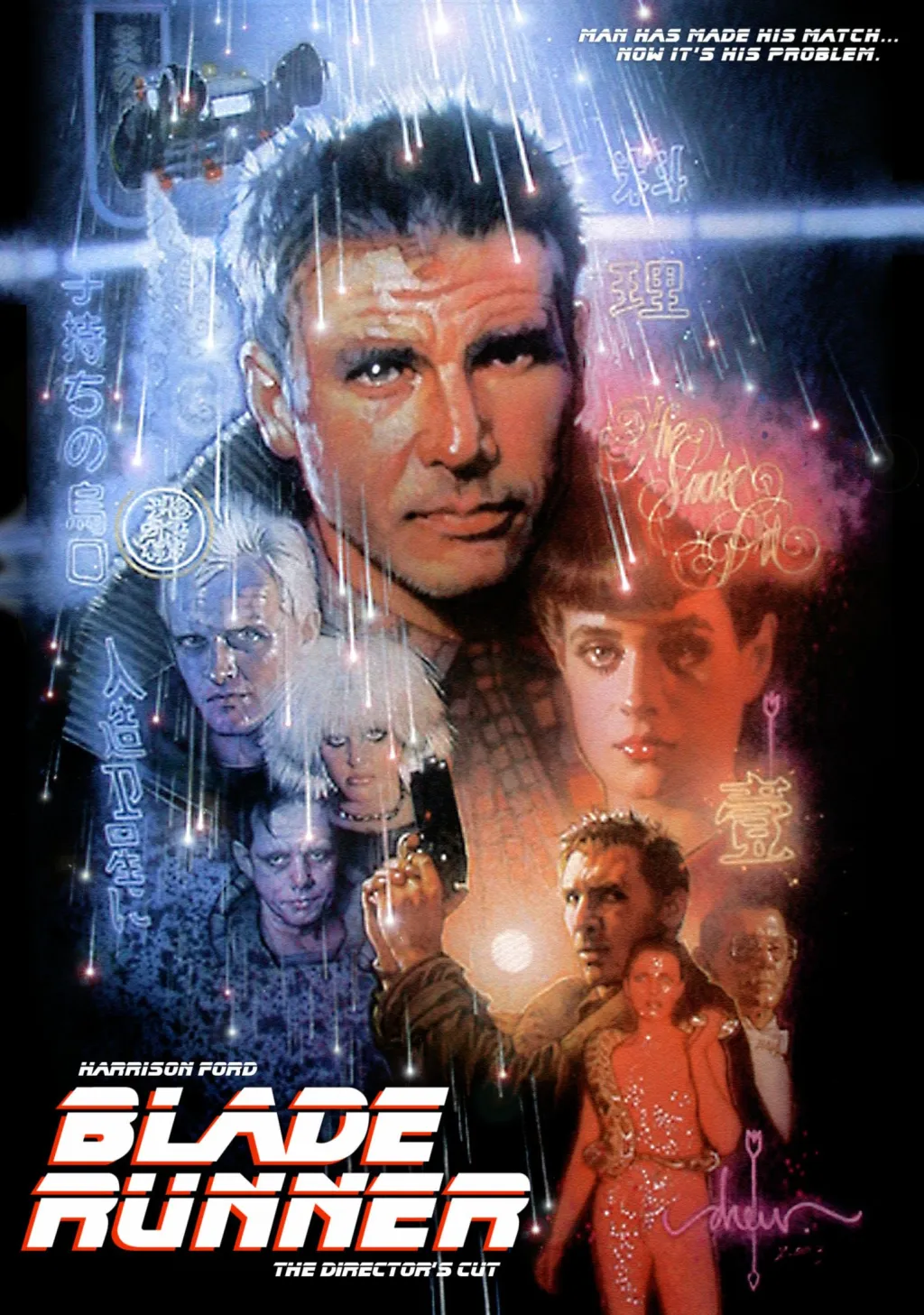- Save the Cat Beat Sheet
- Save the Cat Beat Sheet for Leo
- Save the Cat BeatSheet for the movie Blade Runner (1982)
- Save the Cat Beat Sheet for the Movie Fall (2022)
- Save the Cat Beatsheet for the movie Snowpiercer
Opening Image:
The film opens with an aerial view of a dark and dystopian Los Angeles in 2019. The city is characterized by its towering skyscrapers, perpetual rain, and a neon-lit urban landscape. This atmospheric and rain-soaked cityscape immediately establishes the film’s unique and ominous setting.
Set-up:
- Introduction of Rick Deckard (Harrison Ford): We are introduced to our protagonist, Rick Deckard, a retired Blade Runner who is living a reclusive life away from his former profession.
- The World of Replicants: The film introduces the concept of replicants – bioengineered human-like beings created by the Tyrell Corporation. Replicants are almost indistinguishable from humans and are used for various off-world tasks.
- Deckard’s Reassignment: Deckard is reluctantly brought out of retirement by his former boss, Bryant (M. Emmet Walsh), to track down and “retire” a group of rogue replicants who have come to Earth. These replicants, led by Roy Batty (Rutger Hauer), are highly advanced Nexus-6 models with a limited four-year lifespan.
Theme Stated:
The theme of what it means to be human and the ethical questions surrounding replicants are hinted at. Deckard’s reassignment raises questions about the morality of hunting and killing beings that are almost indistinguishable from humans.
Catalyst:
Deckard’s mission becomes more pressing as he learns about the rogue replicants’ presence in Los Angeles. He is given dossiers on the replicants he must track down, including Roy Batty, Pris (Daryl Hannah), Leon Kowalski (Brion James), and Zhora (Joanna Cassidy).
Debate:
Deckard begins to prepare for his mission, but he is clearly conflicted about returning to a job that involves hunting down beings that are essentially human. He is aware of the ethical and moral dilemmas surrounding replicants.
Click here for a review of the movie Blade Runner (1982)
Break into Two:
Deckard starts actively investigating the whereabouts of the rogue replicants, leading him to the Tyrell Corporation, where they were created. This marks the start of his journey into the unknown.
B Story:
Deckard’s encounter with Rachael (Sean Young) at the Tyrell Corporation adds a romantic subplot. Rachael is an employee of Tyrell, but she is revealed to be a replicant with implanted memories, leading to complex questions about identity and humanity.
Fun and Games:
Deckard begins tracking down the rogue replicants one by one. He confronts Leon in a crowded, steamy market and uses a Voight-Kampff test to determine Leon’s emotional responses, confirming that he is a replicant. Deckard is forced to “retire” Leon in self-defense.
Midpoint:
Deckard’s investigation leads him to a strip club where he encounters Zhora, another of the rogue replicants. A tense chase through the rainy streets of Los Angeles ensues, and Deckard eventually “retires” Zhora in a violent struggle. The midpoint intensifies the action and conflict.
Bad Guys Close In:
Deckard continues his pursuit of the remaining rogue replicants, and the stakes are raised as he realizes the danger they pose. Roy Batty and Pris become increasingly desperate to find a way to extend their short lifespans.
All Is Lost:
Deckard’s investigation takes him to the apartment of J.F. Sebastian (William Sanderson), a genetic designer who works for Tyrell. There, he encounters Pris, one of the rogue replicants. Pris, who exhibits a childlike innocence mixed with deadly cunning, attacks Deckard, but he ultimately defeats her.
Dark Night of the Soul:
Deckard returns to his apartment, where he finds Rachael waiting for him. They share a tense and intimate moment, and Deckard reveals to Rachael that her memories are implants, raising questions about her own identity.
Break into Three:
As the remaining rogue replicants close in on Deckard, his determination to finish the mission strengthens. He knows he must confront Roy Batty, the leader of the rogue replicants, to resolve the situation.
Finale:
Deckard tracks down Roy Batty in the dilapidated Bradbury Building. The final showdown between Deckard and Roy is a masterclass in tension and emotion. Despite the physical and mental challenges Roy poses, Deckard is spared by Roy, who chooses not to kill him. This act of mercy and compassion by the replicant raises profound questions about the nature of humanity and morality. Roy’s death follows shortly after, his time having run out.
Final Image:
The film concludes with Deckard leaving his apartment with Rachael, heading into an uncertain future. The final image of the small origami unicorn left by Gaff, a fellow Blade Runner, suggests that Gaff knows more about Deckard than Deckard knows about himself. This ambiguity raises questions about Deckard’s own identity and whether he is a replicant.
This breakdown of “Blade Runner (1982)” using the Save the Cat beatsheet structure highlights the film’s key plot points and the thematic elements that make it a thought-provoking and enduring science fiction masterpiece.



